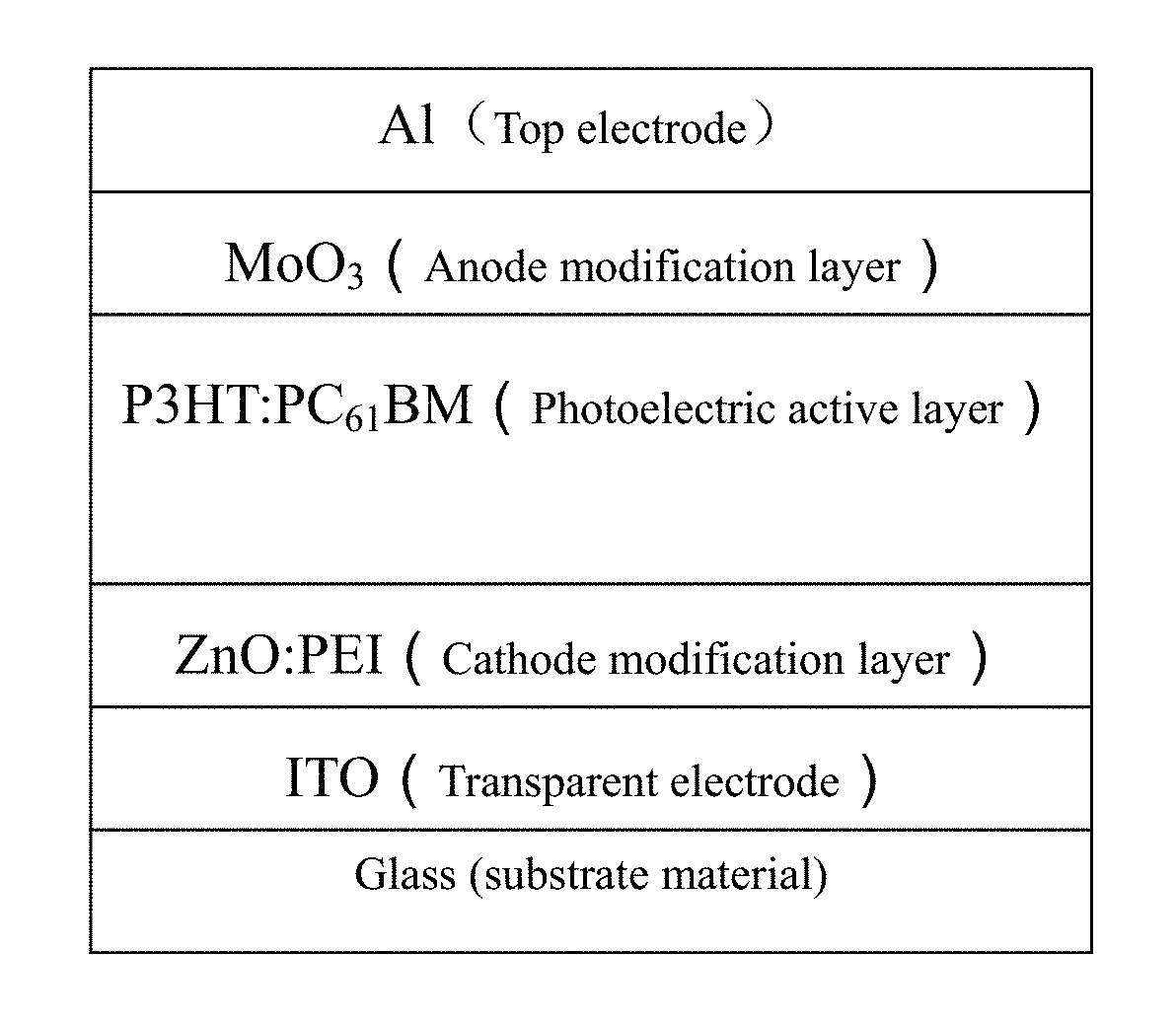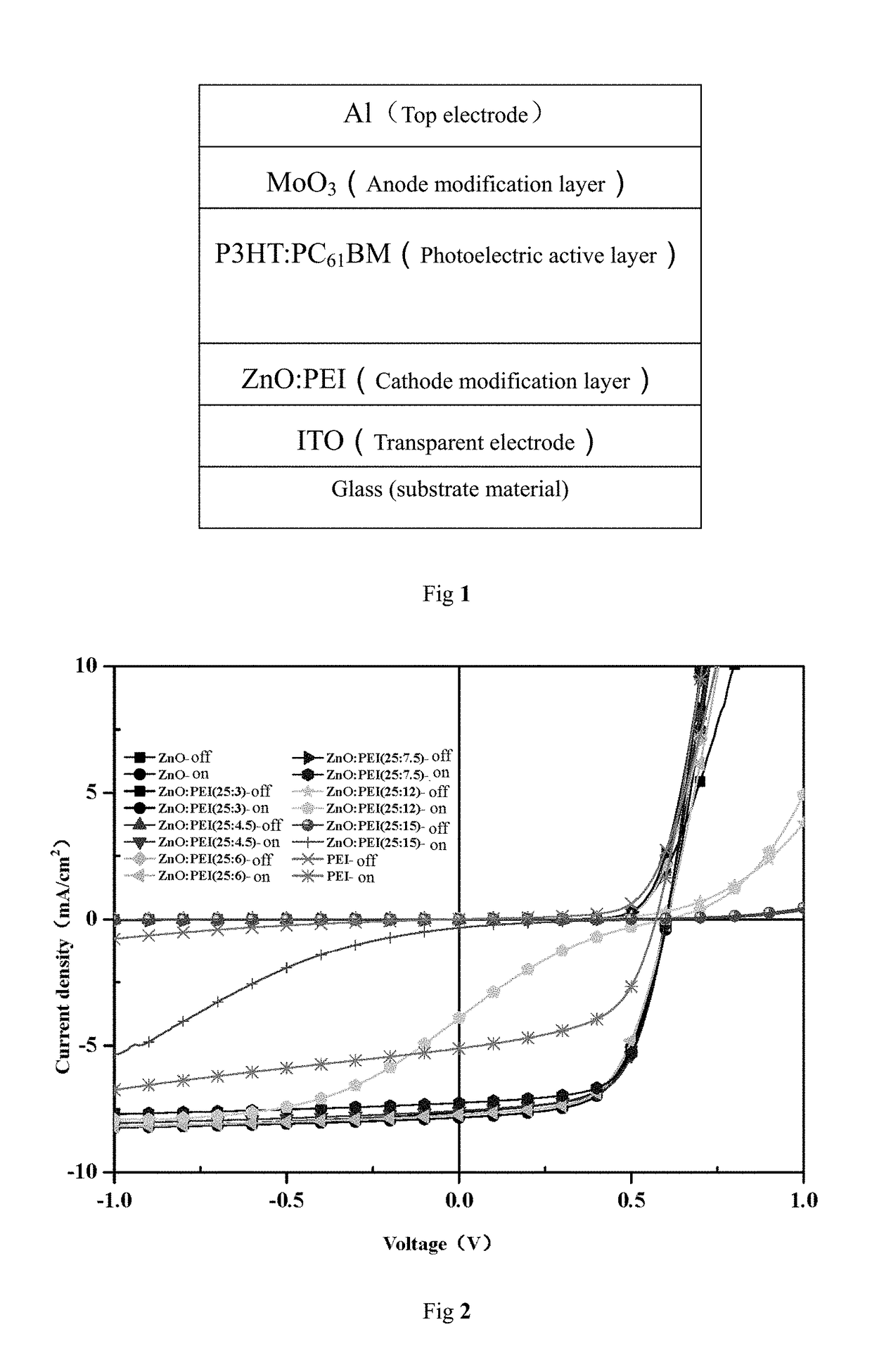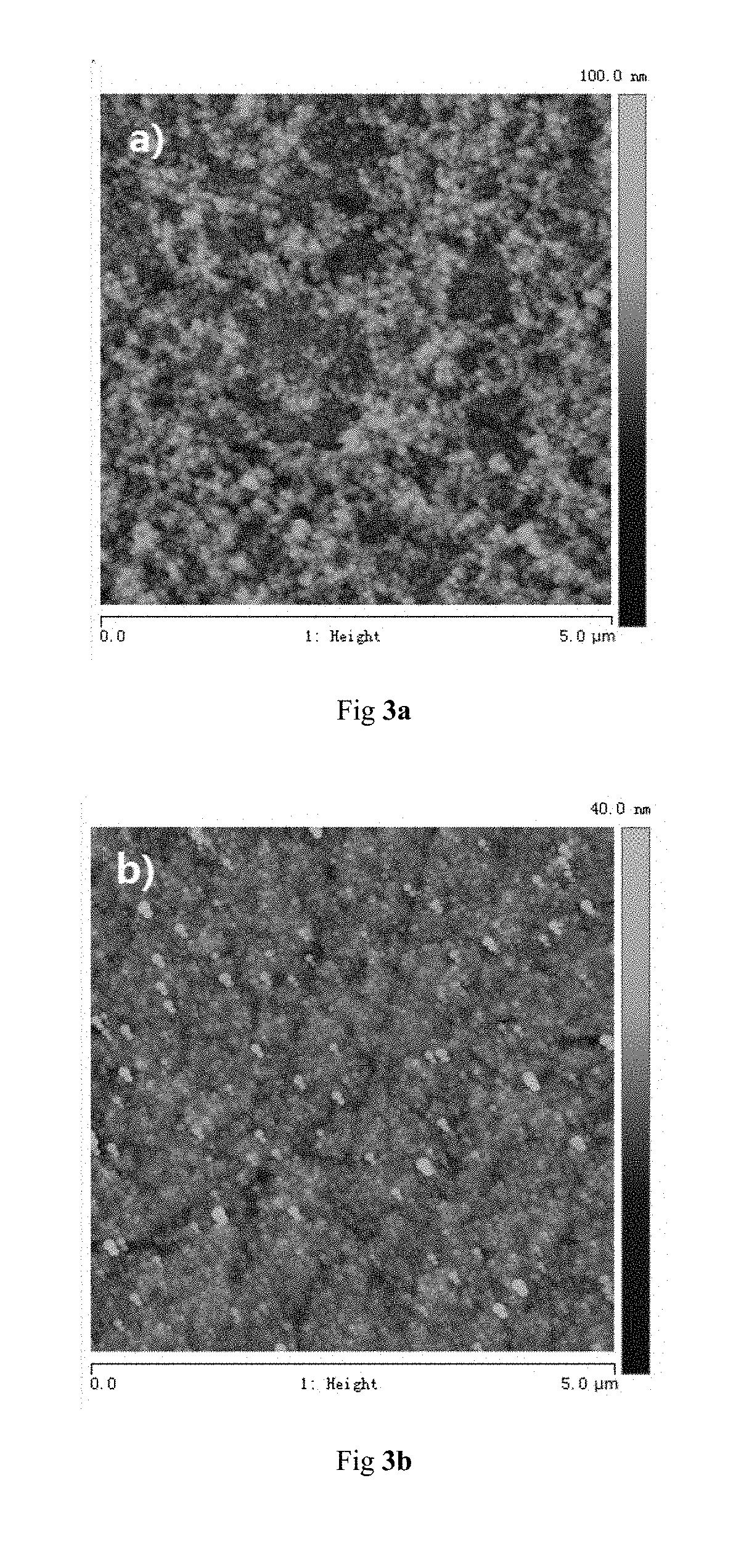Polymer-Metal Compound Composite Ink, and Preparation Method and Application Thereof
a technology of metal oxide and composite ink, which is applied in the direction of arsenic oxides/hydroxides/oxyacids, tungsten oxides/hydroxides, etc., can solve the problems of many defects on the surface of thin films, inability to meet ink-based printing, and inability to achieve ink-based printing. , to achieve the effect of easy preparation, low cost and convenient availability of raw materials
- Summary
- Abstract
- Description
- Claims
- Application Information
AI Technical Summary
Benefits of technology
Problems solved by technology
Method used
Image
Examples
embodiment 1
of ZnO:PEI (Zinc Oxide:Polyethyleneimine) Composite Ink and its Application in an Organic Photovoltaic Device
[0130]The specific operation steps of this embodiment are as follows.
[0131]1. Preparation of ZnO nanoparticles: 2.950 g of zinc acetate dehydrate was dissolved into 125 mL of absolute methanol, and then heated to 60 while stirring. 1.480 g of potassium hydroxide was ultrasonically dissolved into 65 mL of absolute methanol, the methanol solution of potassium hydroxide was quickly added into the zinc acetate solution, and the mixture was heated to 60 to 65 and then magnetically stirred for 2 h at 600 rpm. During the reaction, the solution was first colorless and then separated out white precipitate; then, the precipitate disappeared gradually, and the solution became light blue; about 2 h later, white precipitate was separated out; the system was continuously heated for 0.5 h; the heating was stopped, the reaction was completed.
[0132]2. Preparation of ZnO ink: After the ZnO nan...
embodiment 2
[0138]Preparation of ZnO:PEIE composite ink: a ZnO ink (its preparation process may refer to Embodiment 1) having a concentration of 10 mg / mL and a PEIE (80% methoxylatedpolyethylenimine) solution having a weight concentration of 0.4% were mixed at a different volume ratio and ultrasonically dispersed to obtain the ZnO:PEIE composite ink.
[0139]Preparation of ZnO:PEIE composite cathode modification layer: spin-coating was performed on the ITO surface at 2300 rpm to obtain a ZnO:PEIE composite cathode modification layer.
embodiment 3
of PMA:PEDOT:PSS Composite Ink and its Application in an Organic Photovoltaic Device
[0140]1. The preparation process of the PMA:PEDOT:PSS composite ink includes the following steps.
[0141](1) Preparation of PMA ink: 1 mg of H3PO4.12MoO3.3H2O (PMA) powder was added with 1 mL of redistilled isopropanol, and the mixture was ultrasonically processed to be completely dispersed to obtain the PMA ink having a weight concentration of 1 mg / mL.
[0142](2) Preparation of PMA:PEDOT:PSS composite ink: the PMA ink having a concentration of 1 mg / mL and an PEDOT:PSS (Clevios PV P AI4083) ink were mixed at a different volume ratio and then ultrasonically dispersed to obtain the PMA:PEDOT:PSS composite ink.
[0143]2. The preparation process of a corresponding PMA:PEDOT:PSS composite thin film includes: coating the PMA:PEDOT:PSS composite ink on substrate material by spin-coating, blade-coating or other common methods, and drying to obtain the composite thin film.
[0144]Characterization results of the PMA:P...
PUM
| Property | Measurement | Unit |
|---|---|---|
| concentration | aaaaa | aaaaa |
| concentration | aaaaa | aaaaa |
| particle diameter | aaaaa | aaaaa |
Abstract
Description
Claims
Application Information
 Login to View More
Login to View More - R&D
- Intellectual Property
- Life Sciences
- Materials
- Tech Scout
- Unparalleled Data Quality
- Higher Quality Content
- 60% Fewer Hallucinations
Browse by: Latest US Patents, China's latest patents, Technical Efficacy Thesaurus, Application Domain, Technology Topic, Popular Technical Reports.
© 2025 PatSnap. All rights reserved.Legal|Privacy policy|Modern Slavery Act Transparency Statement|Sitemap|About US| Contact US: help@patsnap.com



